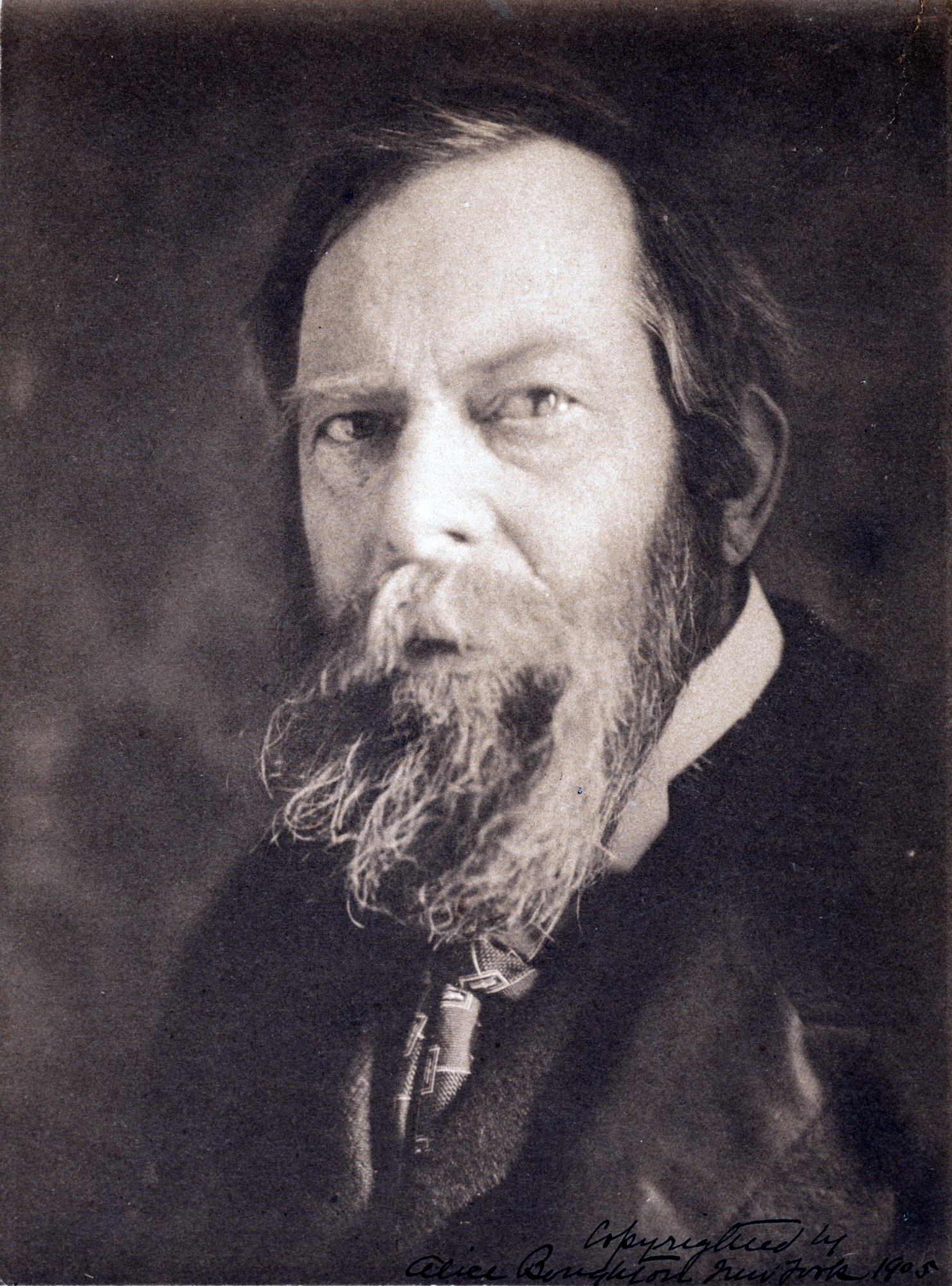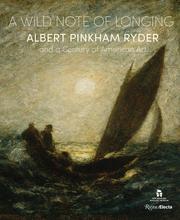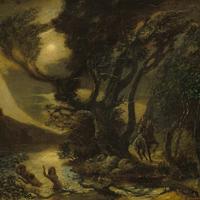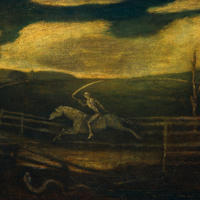More about Albert Pinkham Ryder
- All
- Info
- Shop
Works by Albert Pinkham Ryder
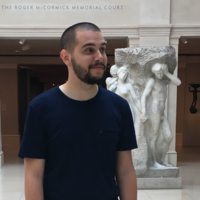
Contributor
Recluse, mystic, all-around weirdo, Albert Pinkham Ryder is considered to be THE American Master painter.
Born and living as a child in what was known at the time as the greatest whaling port in the world, New Bedford, MA, little Ryder became visually impaired after a botched vaccination (in the modern world this would be a field day for indignant Twitter statuses, no doubt). Rather than just hinder the forthcoming artist, some say this visual impairment helped draw Ryder to painting in the first place, contributing to his distinctive style of generalized forms and masses of dense but muted colors (kind of like what I see when I take off my glasses). The inspiration taken from this visual impairment was a silver lining (or thick, muted yellow lining) for Ryder; he began painting outdoors, drawn to the blurry but grand forms of the sea and the countryside.
When Ryder was in his early twenties, he applied to the National Academy of Design in New York but was rejected. He began taking lessons with painter William Edgar Marshall, and, after a period of training, applied again and was accepted. Ironically, upon his entrance into the program he found the conventional methods of painting taught to be too idyllic and naïve. Who wants pretty pastures and blue skies, thought Ryder. He was all about those dark, muted colors and abstract, ethereal shapes. While many scoffed at Ryder’s eccentric approach to painting, there would come a time when he would be the only American painter whose work hung in the same gallery as European masters Cézanne, van Gogh, Gauguin, and Manet at the 1913 Armory Show in New York, an exhibition that virtually defined modern art and introduced the term avant-garde. On top of that, his work would also go on to influence countless famous artists of the 20th century, including Georgia O’Keeffe and Jackson Pollock.
Aside from a few close friends, Ryder was quite the recluse. Some even called him a mystic, though my research didn’t really help to explain why. Honestly, it sounds like the guy just didn’t like socializing or going to parties that much (I guess I’m a mystic too?). Still, his aloofness granted him a kind of “mystical” reputation which his avant-garde-before-it-was-avant-garde paintings, often saddled with powerful religious imagery, only helped to perpetuate.
Ryder was also neurotically methodical in his technical approach, often repainting and relayering the same work over and over, spending months or even years reworking a canvas. A frustrated client once claimed that he would have to leave instructions for his funeral procession to pick up a long-awaited painting. Sadly, as a result of this meticulous over-layering, Ryder’s works have rapidly deteriorated over the years. Go see them while you still can!
Sources
- The Art Story Editors. “Albert Pinkham Ryder.” www.theartstory.org. Accessed June 7, 2018. http://www.theartstory.org/artist-ryder-albert-pinkham.htm
- Encyclopaedia Britannica Editors. “Albert Pinkham Ryder.” www.britannica.com. Accessed June 7, 2018. https://www.britannica.com/biography/Albert-Pinkham-Ryder
- Smithsonian American Art Museum Editors. “Albert Pinkham Ryder.” www.americanart.si.edu. Accessed June 7, 2018. https://americanart.si.edu/artist/albert-pinkham-ryder-4199
Featured Content
Here is what Wikipedia says about Albert Pinkham Ryder
Albert Pinkham Ryder (March 19, 1847 – March 28, 1917) was an American painter best known for his poetic and moody allegorical works and seascapes, as well as his eccentric personality. While his art shared an emphasis on subtle variations of color with tonalist works of the time, it was unique for accentuating form in a way that some art historians regard as a precursor to modernism.
Check out the full Wikipedia article about Albert Pinkham Ryder

